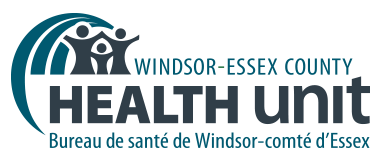Formula Feeding

There are many ways to bond with your baby while feeding. Hold your baby close, look into their eyes, or softly talk or sing to them. Enjoy this time together.
You can feed your baby infant formula alone or in combination with breast milk.
Breastfeeding Tip: To support your breastmilk supply while bottle or cup feeding, breastfeed or express breast milk every 2-3 hours during the first few weeks of life.
View list of breastfeeding services and resources
Resources
Bottle Feeding Your Baby (Windsor-Essex County Health Unit, 2025)
This fact sheet is helpful for families who are breastfeeding and bottle feeding. It includes:
- Feeding Frequency: How often to feed your baby
- Signs of Hunger and Fullness: How to tell when your baby is ready to eat or has had enough
- Feeding Amounts: How much to feed your baby, whether it's formula or breast milk
Infant Formula Recalls (Government of Canada)
This website posts safety concerns with formula and other infant feeding products. Consider subscribing to be notified about new recalls.
Information for families on the limited supply of infant formula (Health Canada, 2023)
This webpage provides guidance about what you can do if you cannot find your usual infant formula during periods of formula shortage.
Infant Formula and How to Prepare Formula
Toronto Public Health provides information on the different types of infant formula available and how to prepare formula.
Feeding Your Baby In The First Year
The Canadian Paediatric Society provides parents and caregivers with information on feeding their baby during the first year of life.
Videos
Look for the following signs to make sure your baby is getting enough to eat:
- Your baby feeds at least 8 times every 24 hours.
- Your baby is active and has a strong cry.
- Your baby has a wet, pink mouth, and bright eyes.
- Your baby has enough wet and dirty diapers, according to their age (see chart below).
This chart is available in multiple languages here.
Your baby’s primary healthcare provider (i.e., doctor or nurse practitioner) will also track their growth as another way to make sure that your baby is getting the right amount of nutrition. Your baby’s growth should be monitored one to two weeks after birth and at two, four, six, nine, 12, 18 and 24 months of age and every year after age two. Your baby’s primary healthcare provider may monitor your child’s growth more frequently if there is a feeding concern.
If you notice signs that feeding is not going well, especially if your baby not producing the recommended number of wet and dirty diapers, seek medical attention.
